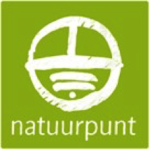Grote Netewoud
Wilderness on a human scale
Located in the Kempen region of northeast Belgium, close to the Dutch border, the valley of the Grote Nete (Great Nete) River is characterised by its remarkably diverse mosaic of habitats, including heathland, sand dune, grassland, marsh and floodplain forest. These are home to a rich wild nature, with beaver, otter and black stork as signature species.
Extending across 340 hectares, a series of nature reserves (most designated as Natura 2000 Network sites) has already been created along the valley of the Grote Nete. Leading Belgian conservation NGO Natuurpunt has been working to connect these areas since 2012, rewilding the landscape to create one continuous, 2500-hectare reserve: the Grote Netewoud (Great Nete Forest).
- wet grasslands
- lowland river and open water
- mires and quacking bogs
- land dunes and dry heath
- Large restoration of more than 250 ha alluvial forests and open habitats such as water vegetations, dry heath, land dunes and grasslands.
- Opening of a new visitor centre, situated in a heritage site (old water mill) in 2019.
- Realization of new visitor infrastructure such as the ‘Totterpad’.
- Development of management teams and local chapters with strongly involved volunteers over the entire length of the valley, hence increasing the public support for the area significantly.
- Province of Antwerp and the Flemish Environment Agency (VMM), both partners in the project, are restoring the natural river course of the Grote Nete promoting the development of typical riverine habitats and species.
- Organization of 100s of activities for the general public, during which the importance of the high natural values is demonstrated and as a result of which the support for the project grows strongly.8, Setting up a consultation structure with local authorities and stakeholders, water managers and other land users to effectively realize the long-term vision for the area.
2. Large scale restoration of typical habitats and their associated species in a lowland river ecosystem.
3. How to involve local people in a large scale project.
4. Working together with different stakeholders and managers to realize the common goals of river valley restoration.
5. Realizing new, innovative visitor infrastructure and a visitor centre to invite people to explore and (re)discover wild nature in a human environment.
6. Attracting different types of funding for project realization.
Located in the Kempen region of northeast Belgium, close to the Dutch border, the valley of the Grote Nete (Great Nete) River is characterised by its remarkably diverse mosaic of habitats, including heathland, sand dune, grassland, marsh and floodplain forest. These are home to a rich wild nature, with beaver, otter and black stork as signature species.
Extending across 340 hectares, a series of nature reserves (most designated as Natura 2000 Network sites) has already been created along the valley of the Grote Nete. Leading Belgian conservation NGO Natuurpunt has been working to connect these areas since 2012, rewilding the landscape to create one continuous, 2500-hectare reserve: the Grote Netewoud (Great Nete Forest).
- wet grasslands
- lowland river and open water
- mires and quacking bogs
- land dunes and dry heath
- Large restoration of more than 250 ha alluvial forests and open habitats such as water vegetations, dry heath, land dunes and grasslands.
- Opening of a new visitor centre, situated in a heritage site (old water mill) in 2019.
- Realization of new visitor infrastructure such as the ‘Totterpad’.
- Development of management teams and local chapters with strongly involved volunteers over the entire length of the valley, hence increasing the public support for the area significantly.
- Province of Antwerp and the Flemish Environment Agency (VMM), both partners in the project, are restoring the natural river course of the Grote Nete promoting the development of typical riverine habitats and species.
- Organization of 100s of activities for the general public, during which the importance of the high natural values is demonstrated and as a result of which the support for the project grows strongly.8, Setting up a consultation structure with local authorities and stakeholders, water managers and other land users to effectively realize the long-term vision for the area.

